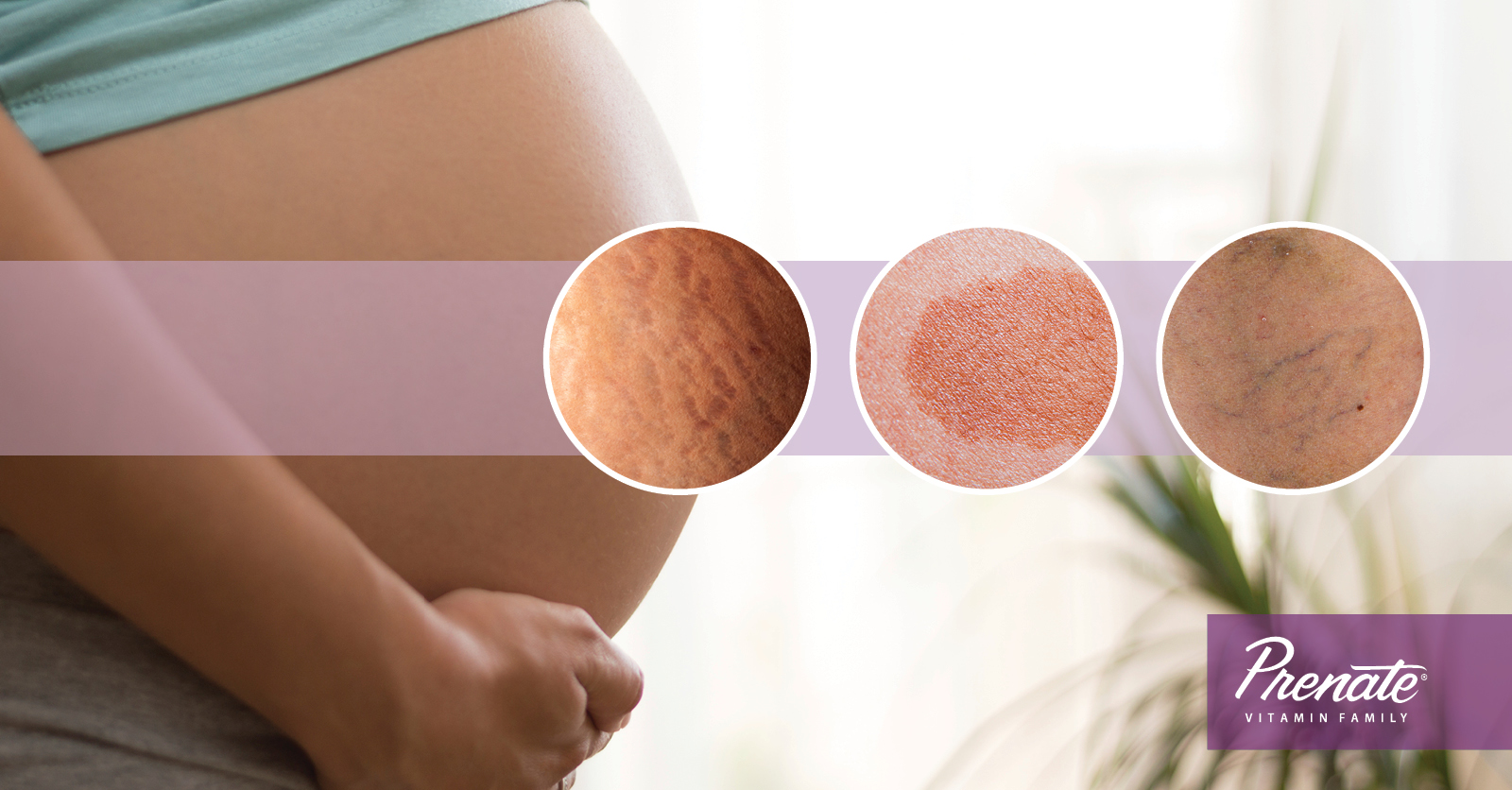Changes to Skin During Pregnancy
July 13, 2015
The summer months are the hottest time of the year, and people in the U.S. spend the most time outdoors during these months. Protecting and caring for your skin is even more important with this increased exposure to the sun’s UV rays. During the summer months, pregnant women have an even greater concern. Pregnant women may experiences increased hormone levels which may cause their skin to be hypersensitive. And other physiological changes that pregnant women experience can cause a number of other skin conditions to occur.
Melasma
Melasma, also commonly referred to as Pregnancy Mask, is where brown or dark splotchy spots occur on a pregnant woman’s face. These spots are caused by increased pigmentation and often occur on the forehead and cheeks. Exposure to the sun can intensify these spots. Therefore, it’s important to wear sunscreen with SPF of 30 or higher and a protective hat when outdoors.
Linea Nigra & Darkening Freckles, Moles & Skin
Increased concentrations of melanin, a key component in skin pigmentation, may also darken existing moles and freckles. Melanin may also cause other areas of the skin to darken, such as nipples, areolas, labia. You may also notice a dark line that runs from the navel to pubic bone, a condition called Linea Nigra. Each of these events is perfectly natural, and the darkening may fade after pregnancy although may not completely go away.
Stretch Marks
Nearly 90% of pregnant women will experience stretch marks in their sixth or seventh month of pregnancy.1 Stretch marks occur because of the rapid weight gain and growth in the belly and breasts that occur during pregnancy. Unfortunately there is no way to prevent stretch marks. Instead, the focus should be on fading. Use a rich, creamy lotion with Vitamin E to hydrate the skin. There are also other cosmetics, supplements and treatments. you can discuss with your doctor after pregnancy that help speed cell turn over and stimulate collagen growth in those affected areas.
Spider Veins & Varicose Veins
When a woman becomes pregnant, her blood volume increases to accommodate for the new growing baby inside. This increase in blood and blood pressure can cause stress on the veins that transport the blood. Spider veins are tiny, reddish blood vessels that branch outward. They often appear on the face, neck, chest and arms of pregnant women. They are not painful and do typically fade after delivery.
However, a more serious condition called varicose veins can be uncomfortable and sometimes painful. Varicose veins typically occur on the legs and are also caused by the increased blood volume traveling to your baby. While heredity factors may increase the likelihood of varicose veins, you can take steps to minimize the symptoms: Don’t stand or sit for long periods of time; walk frequently to get the blood pumping back to your heart; try support stockings and take plenty of Vitamin C to support healthy and elastic veins.
Pregnancy Vitamins that Support Healthy Skin
While sunscreens, limited sun exposure, and daily moisturizers may all support healthy skin, vitamins and nutrients may be worth consideration. Taking a prenatal vitamin that contains Vitamin C, Vitamin E, and other essential nutrients is a great way to support the needs of you and your baby while getting the nutrients you need too. Talk to your doctor about the Prenate® Vitamin Family to see which pregnancy vitamin is right for you.













